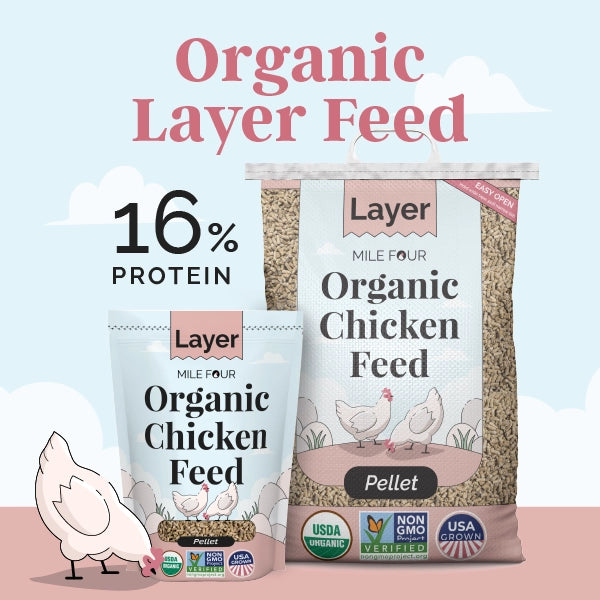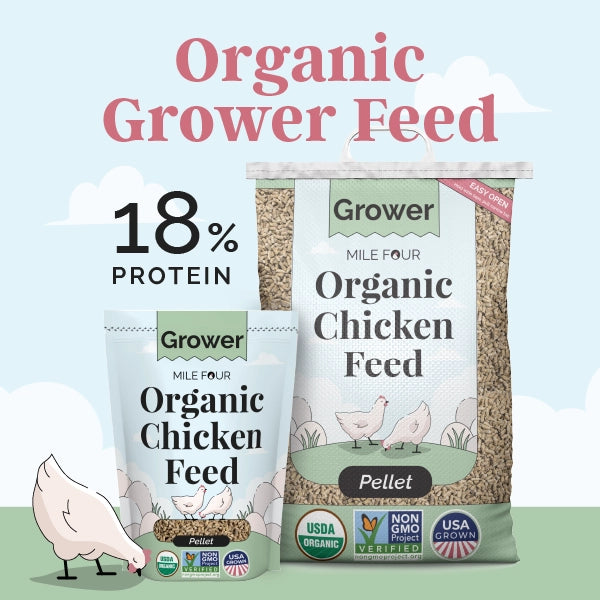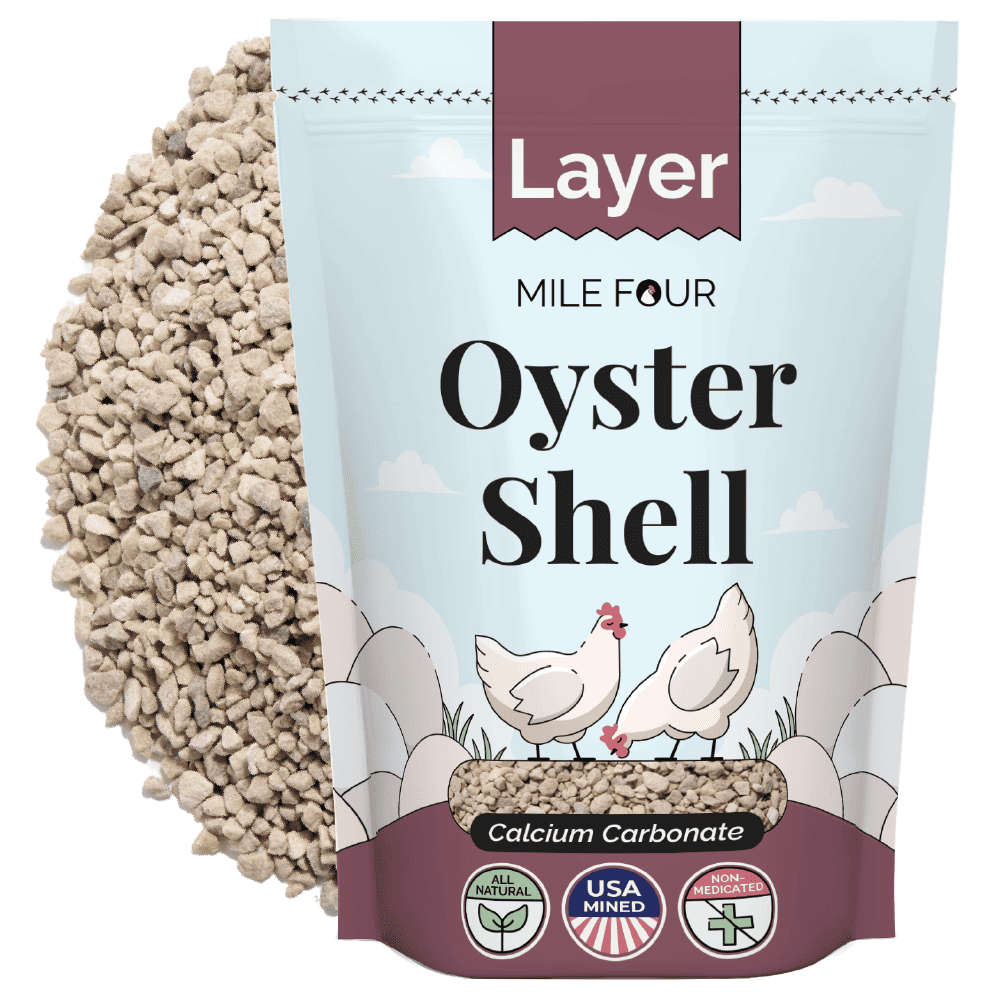Just like waterers, chicken feeders come in many different varieties. Unlike waterers, however, you’ll need to take into account the amount of food that chickens waste when they eat. Chickens are notorious for leaving their feed anywhere but the feeder, so make sure you build or buy one that discourages this as much as possible.
You’ll never get a perfect chicken feeder, but hopefully, we’ll get you close with this guide!
PVC Chicken Feeder
Chickens can and will be an expensive venture for your backyard farm, so cutting costs where you can is the best way to make sure you don’t drain your bank account and your love for your ladies.
The best way to do this is with a DIY PVC Chicken Feeder. It’s our recommended way to build a feeder, especially if you have a smaller flock. Larger flocks will require more sophisticated equipment, but we’ll get to that later.
For your DIY PVC Chicken Feeder you will need:
-
10ft PVC Drain Pipe ($9.23)
-
3in 45-Degree PVC Elbow Fitting ($3.22)
-
3in 90-Degree PVC Elbow Fitting ($2.86)
-
3in PVC Pipe Caps (2) ($5.48)
This DIY feeder will only set you back $20.79!
You can use your 10ft Drain Pipe for up to four feeders (2.5ft each), but you’ll want to purchase each of the other products for each feeder.
Other products that aren’t 100% necessary are:
The reason these are optional is that you can get away with not using them. If you want a 10ft high feeder, you won’t need the hacksaw. If you trust the pipe to fit together and never come apart, you won’t need the cement, and depending on how you’re affixing the feeder to the coop, you’ll only need one of the strap/bungee cords.
It’s open to interpretation because that’s how DIY should be!
So! From here on out it’s pretty straight forward.
-
Cut your 10ft PVC Pipe to the length you want the feeder. Make sure you make a clean, straight cut to ensure the elbow fittings slot in nicely
-
Slide the 90-degree elbow fitting onto the bottom of the pipe
-
Slide the 45-degree elbow fitting onto the 90-degree elbow fitting
-
Attach the feeder to your coop with bungee cords or 3in pipe straps (be sure to use one pipe strap/bungee cord on the top of the feeder and one on the bottom to ensure sturdiness)
That’s it! Well, other than filling the top with Mile Four’s best feed obviously. Below we’ve provided a handy guide you can print/download to help in your DIY-ing!

One of the caps you purchased will sit on top of the feeder for when you’re not filling it up, but the other can be used to make sure your ladies aren’t wasting their feed.
Here’s an optional step-by-step to make that happen:
-
Cut the cap in half vertically
-
Affix the half-cap to the bottom of the feeder so it is covering half of the end
-
Adjust the height of the feeder to make sure your chickens can still eat from the feeder
-
Cut more off the cap for smaller chickens if they’re still having trouble eating
This should set you up for happy, healthy and non-hungry chickens which in turn will lay wonderful eggs!
Automatic Chicken Feeders
While the above method is as close as you’ll get to a DIY Automatic Chicken Feeder, there are some options on the market for somebody that wants something more sophisticated.
If you’re not much of a DIY Diva (a DIYva?) then you’ll probably want to invest in an automatic chicken feeder.
When considering an Automatic Chicken Feeder as opposed to your DIY Feeder, you’ll want to ensure you have one big enough (or multiple feeders) for your flock.
When working with a small flock (6-12 per feeder), there’s truly only one automatic feeder on the market for you, which is Grandpa’s Automatic Chicken Feeder.
This feeder opens up when your chickens step on it which deters waste, and allows them to eat whenever they want. This method also deters any rats or small pests as they’re too light to open the feeder.
Unfortunately, it won’t deter anything larger so you might want to consider putting it inside the coop or in a covered run where things like possums can’t get to it.
For a flock of 12, you’ll probably only need to refill it with a bag of our finest feed once every 10 days, but if you’re unsure of how much feed you’ll actually go through, be sure to check out our feed calculator!
Hanging Chicken Feeders
If you’ve read our Chicken Waterer Guide you’ll know you can make a DIY Chicken Waterer in a pinch with a super simple list of products.
The same goes for a DIY Hanging Chicken Feeder with a couple additions.
All you’ll need is:
-
At the bottom of the bucket, drill 2-3 inch holes opposite 2 inches apart
-
Attach the pan to the bucket with PVC Cement and wait to cure
-
Fill the bucket with feed
-
Hang the bucket by the handle

You won’t need to create an airtight seal with this method, but a lid will still help keep out any pests but also stop chickens from hopping up and pooping in the bucket.
Of course, you don’t necessarily have to hang this feeder for it to work, but hanging it will minimize waste since your chickens love to toss their feed around.
It’ll also minimize any contamination opportunities, as it’ll be harder for your chickens to jump up onto the top and poop into the feed.
Chicken Trough Feeders
If you’re not too worried about waste and pests, you can purchase a chicken trough feeder. These can be great for larger flocks as you can purchase large troughs or multiple and place them side by side.
Some are designed to reduce waste, but they don’t hold a candle to the automatic chicken feeders or the hanging ones either.
To prevent pests with these trough feeders, it would be best to place them inside the coop or in a covered run but preventing contamination would be hard as not many trough feeders have covers to prevent your ladies from pooping.
Rat Proof Chicken Feeders
Feed wastage by chickens is somewhat inevitable, but wasting food via rats and other rodents is a concern that many backyard farmers have and it’s easily managed!
If you are using our DIY Chicken Feeder method, the caps you buy are a perfect deterrent for rats because they won’t be able to get in. Of course, this means that your chickens won’t either, but you’re likely only going to need to use the caps at night anyway.
If you’re looking for a solution that is more hands-off, a Rat Proof Chicken Feeder might be the way to go for you.
This kit is a hanging feeder that is always open unless a rat or other rodent jumps up to swing on it. The weighted mechanism falls down and closes off the feed for any pesky rodent, which means you’ll no longer need to use rat poison! We don’t vibe with rat poison at Mile Four.
Now that you've read this guide, you should be good to go with building your own chicken feeder and also have the best options available if you're wanting to buy one!
If you have any tips and tricks, comment below or email us at milefour@milefour.com.
Additional Resources:
A step-by-step tutorial from the My Pet Chicken Blog.
Sugar Maple Farmhouse has a helpful article.



![Winter Chicken Care | Ultimate Guide [2025]](http://milefour.com/cdn/shop/articles/Mile_Four-Content-15_e1067340-1a72-4632-83f5-c66d9a2158d9.png?v=1765974101&width=1500)





